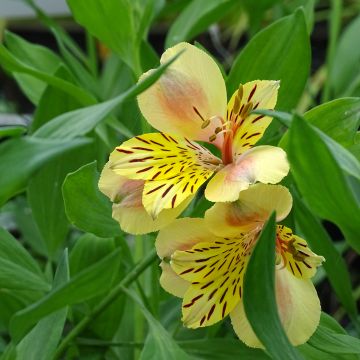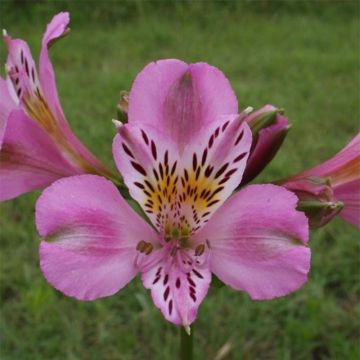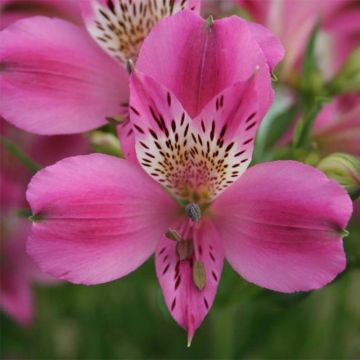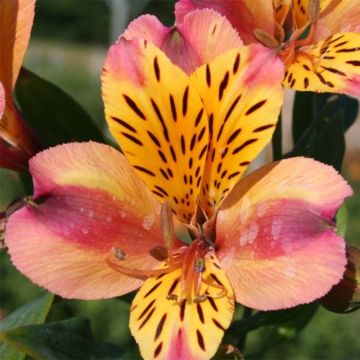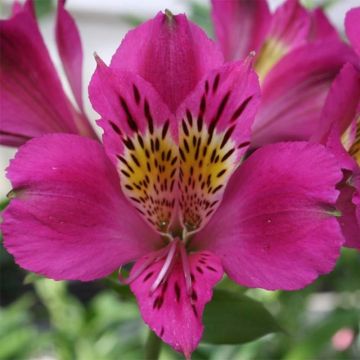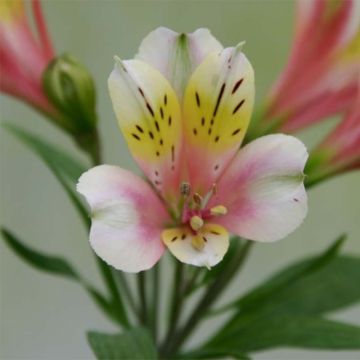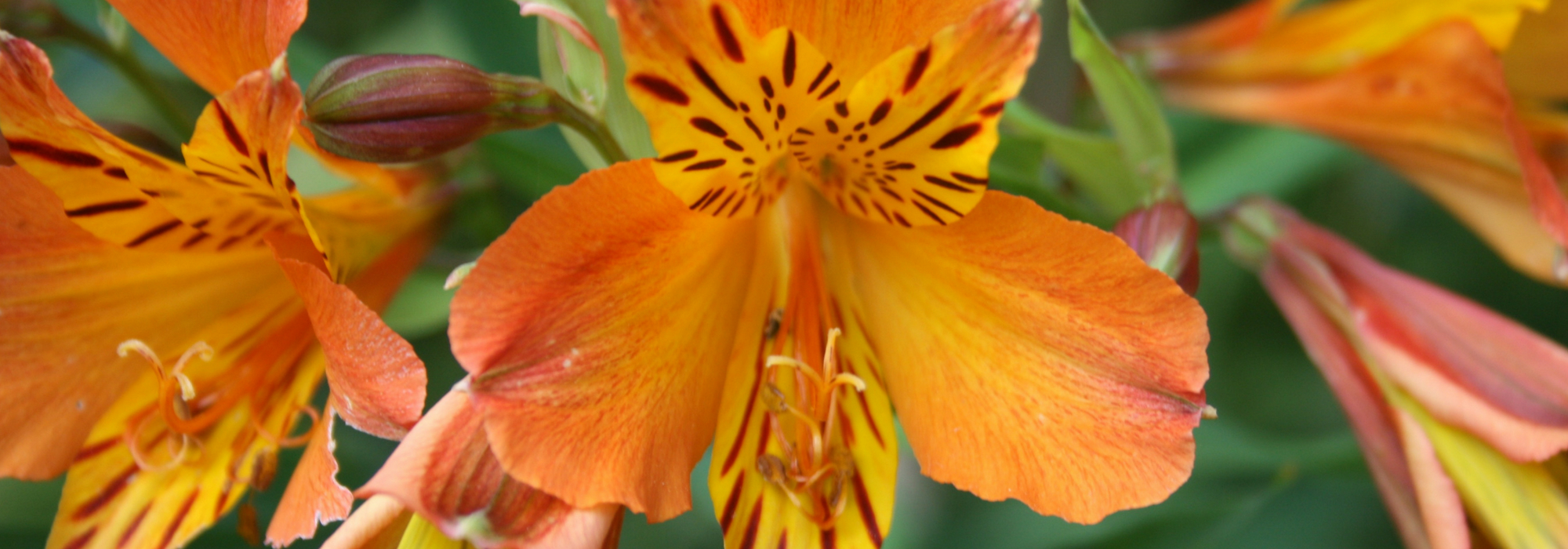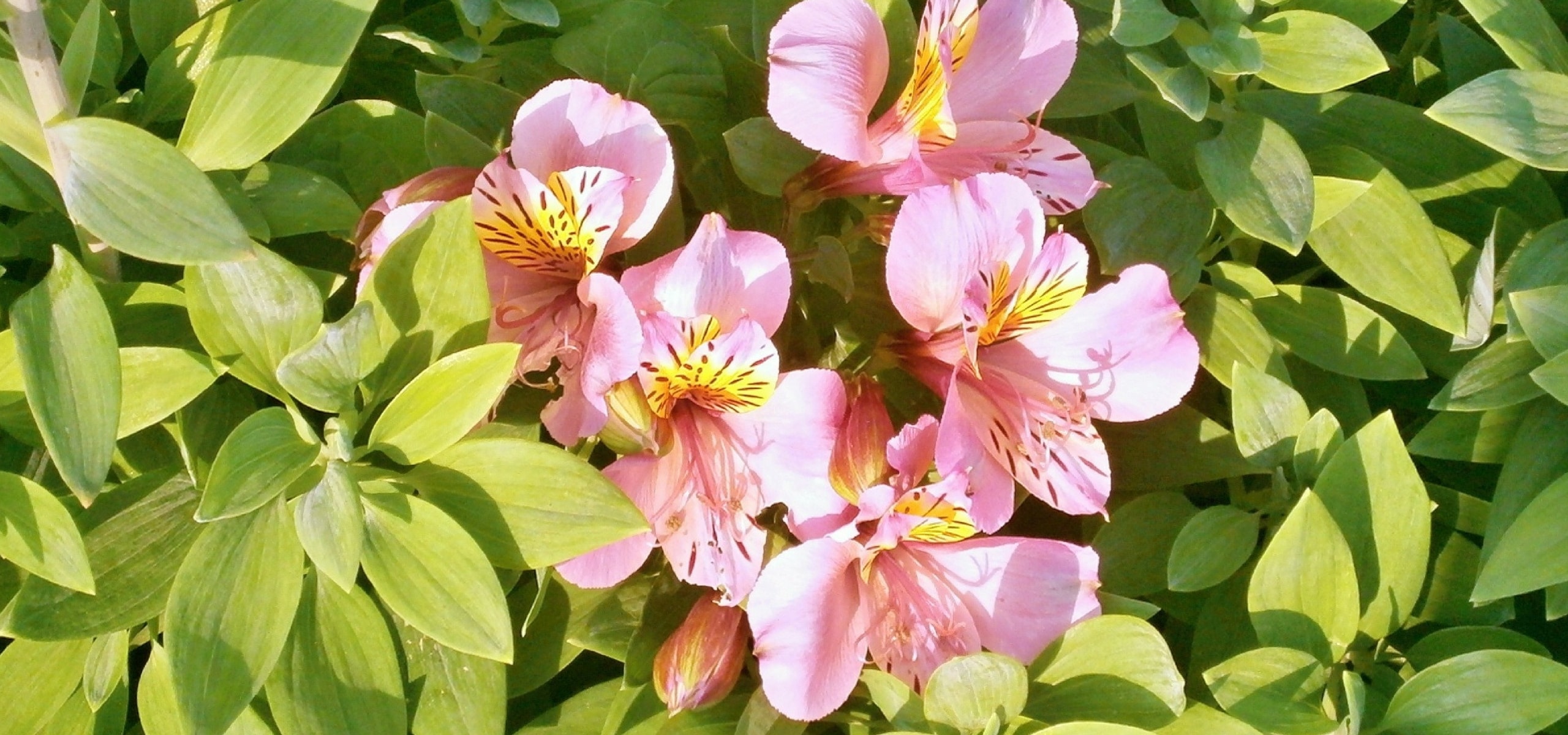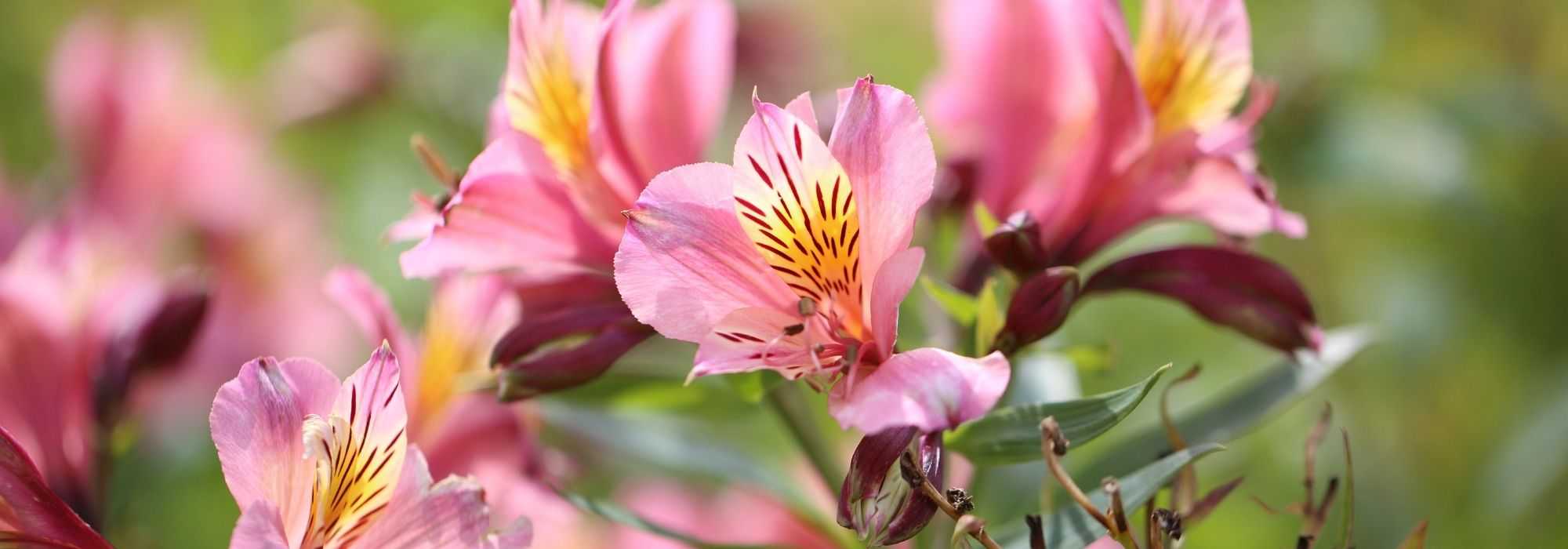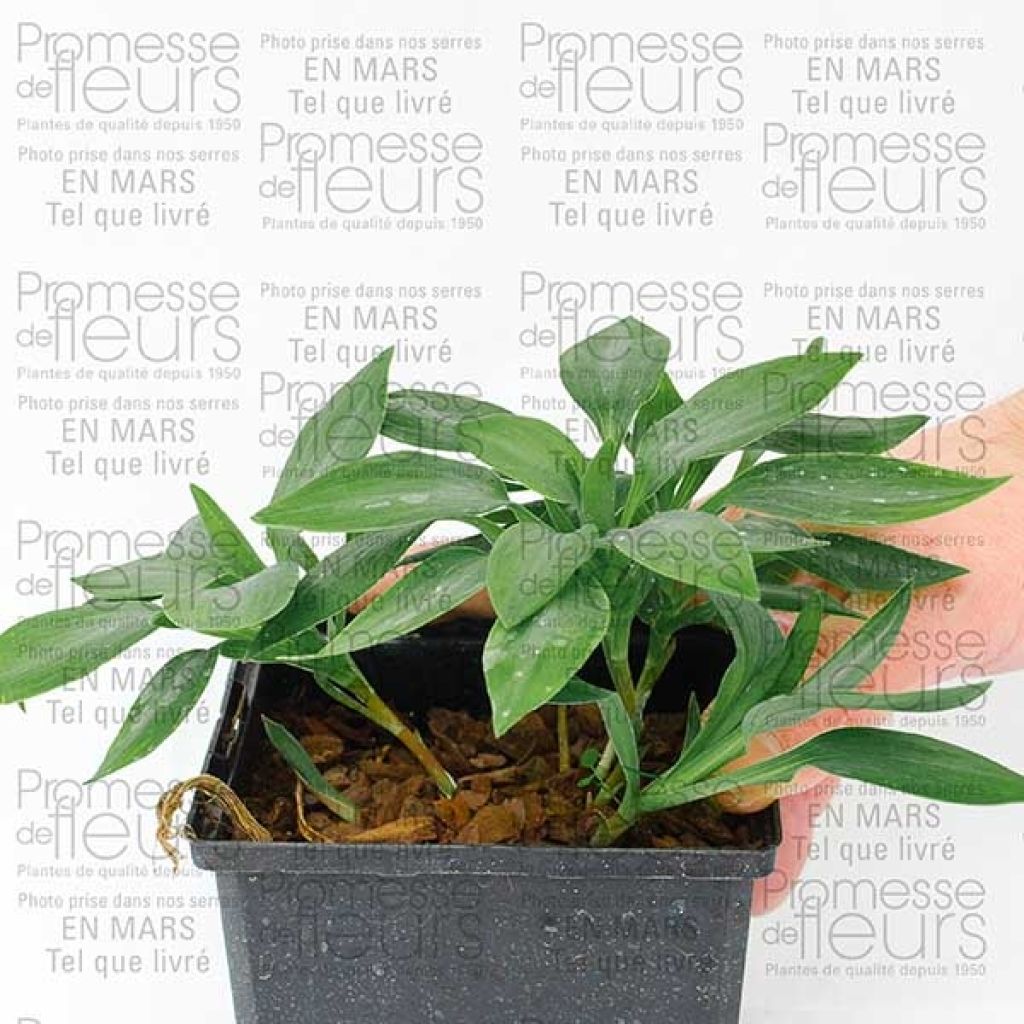

Alstroemeria Inca Ice - Peruvian Lily
Alstroemeria Inca Ice - Peruvian Lily
Alstroemeria 'Koice' INCA ICE
Alstroemère Inca Ice, Lys des Incas Inca Ice
Absolutely fabulous, still in full bloom today, 5th November. My rating: 5/5, of course!!!
viviane, 05/11/2014
Special offer!
Receive a €20 voucher for any order over €90 (excluding delivery costs, credit notes, and plastic-free options)!
1- Add your favorite plants to your cart.
2- Once you have reached €90, confirm your order (you can even choose the delivery date!).
3- As soon as your order is shipped, you will receive an email containing your voucher code, valid for 3 months (90 days).
Your voucher is unique and can only be used once, for any order with a minimum value of €20, excluding delivery costs.
Can be combined with other current offers, non-divisible and non-refundable.
Why not try an alternative variety in stock?
View all →This plant carries a 6 months recovery warranty
More information
We guarantee the quality of our plants for a full growing cycle, and will replace at our expense any plant that fails to recover under normal climatic and planting conditions.
Would this plant suit my garden?
Set up your Plantfit profile →
Description
Also known as Peruvian Lily, the Alstroemeria or Alstroemeria Inca Ice is a very floriferous hybrid, well-suited for cut flowers and relatively hardy (-8/-10°C). Its flowers in apricot-pink and cream tones open all summer and until the first frosts, on dense yet flexible foliage. A beautiful perennial for sunny borders, it also thrives in a large pot on the terrace, provided the drainage is impeccable and watering is consistent during dry periods.
Alstroemeria ‘Koice’ Inca Ice belongs to the Alstroemeriaceae family; this cultivar is often marketed under the Inca Ice™ brand; it is part of the "Inca" series, resulting from hybridisation work carried out in the Netherlands by the house Könst Alstroemeria, known for its more compact and garden-hardy selections than greenhouse varieties.
The plant forms, from a fleshy rootstock with brittle tuberised roots, a clump with an upright and flexible habit, slowly spreading by short rhizomatous shoots. The flowering stems, 60 to 75 cm tall (up to 80 cm in rich soil), bear alternate lanceolate leaves, 7 to 12 cm long. The foliage is deciduous to semi-evergreen depending on the climate. In the garden, a well-established clump commonly reaches 70 cm in height and 60–75 cm in width. The inflorescences in terminal umbels gather numerous funnel-shaped flowers, 4 to 5 cm across, with outer petals of a very pale apricot-pink; the smaller inner petals are cream to light yellow, heavily punctate or striate with brown-purple; the flowering renews from June to September-October. The hardiness of this variety is estimated at −8/ −10 °C in light, well-drained soil and protected by a winter mulch.
The more cut flower arrangements you make, the more you stimulate its flowering! Plant this Inca Ice Peruvian Lily in gentle sun or partial shade, in fertile, well-drained soil, and water regularly in summer. Pair this cultivar with other pastel Alstroemeria: Inca Lake, Inca Coral and Alstroemeria Inticancha White Pink Blush. Their staggered flowering creates a border full of softness and refinement. In a bouquet, you can mix its flowers with those of Dahlia 'Rosario' and the rose ‘Buff Beauty’. Cut the stems as soon as the first flowers open.
Plant habit
Flowering
Foliage
Botanical data
Alstroemeria
'Koice' INCA ICE
Alstroemeriaceae
Alstroemère Inca Ice, Lys des Incas Inca Ice
Cultivar or hybrid
Planting and care
Inca Ice alstroemerias are quite hardy, down to -8/-10°C. Plant them in fine weather spaced 15 cm apart, in lightened soil mixed with sand and compost. Your soil should be light and deeply worked. Plant them in full sun, or in afternoon partial shade, and do not disturb them during their first season; mulch them for their first winter in open ground. They will delight you with their continuous flowering from June until frosts.
Planting period
Intended location
Care
Planting & care advice
-
, onOrder confirmed
Reply from on Promesse de fleurs
Haven't found what you were looking for?
Hardiness is the lowest winter temperature a plant can endure without suffering serious damage or even dying. However, hardiness is affected by location (a sheltered area, such as a patio), protection (winter cover) and soil type (hardiness is improved by well-drained soil).

Photo Sharing Terms & Conditions
In order to encourage gardeners to interact and share their experiences, Promesse de fleurs offers various media enabling content to be uploaded onto its Site - in particular via the ‘Photo sharing’ module.
The User agrees to refrain from:
- Posting any content that is illegal, prejudicial, insulting, racist, inciteful to hatred, revisionist, contrary to public decency, that infringes on privacy or on the privacy rights of third parties, in particular the publicity rights of persons and goods, intellectual property rights, or the right to privacy.
- Submitting content on behalf of a third party;
- Impersonate the identity of a third party and/or publish any personal information about a third party;
In general, the User undertakes to refrain from any unethical behaviour.
All Content (in particular text, comments, files, images, photos, videos, creative works, etc.), which may be subject to property or intellectual property rights, image or other private rights, shall remain the property of the User, subject to the limited rights granted by the terms of the licence granted by Promesse de fleurs as stated below. Users are at liberty to publish or not to publish such Content on the Site, notably via the ‘Photo Sharing’ facility, and accept that this Content shall be made public and freely accessible, notably on the Internet.
Users further acknowledge, undertake to have ,and guarantee that they hold all necessary rights and permissions to publish such material on the Site, in particular with regard to the legislation in force pertaining to any privacy, property, intellectual property, image, or contractual rights, or rights of any other nature. By publishing such Content on the Site, Users acknowledge accepting full liability as publishers of the Content within the meaning of the law, and grant Promesse de fleurs, free of charge, an inclusive, worldwide licence for the said Content for the entire duration of its publication, including all reproduction, representation, up/downloading, displaying, performing, transmission, and storage rights.
Users also grant permission for their name to be linked to the Content and accept that this link may not always be made available.
By engaging in posting material, Users consent to their Content becoming automatically accessible on the Internet, in particular on other sites and/or blogs and/or web pages of the Promesse de fleurs site, including in particular social pages and the Promesse de fleurs catalogue.
Users may secure the removal of entrusted content free of charge by issuing a simple request via our contact form.
The flowering period indicated on our website applies to countries and regions located in USDA zone 8 (France, the United Kingdom, Ireland, the Netherlands, etc.)
It will vary according to where you live:
- In zones 9 to 10 (Italy, Spain, Greece, etc.), flowering will occur about 2 to 4 weeks earlier.
- In zones 6 to 7 (Germany, Poland, Slovenia, and lower mountainous regions), flowering will be delayed by 2 to 3 weeks.
- In zone 5 (Central Europe, Scandinavia), blooming will be delayed by 3 to 5 weeks.
In temperate climates, pruning of spring-flowering shrubs (forsythia, spireas, etc.) should be done just after flowering.
Pruning of summer-flowering shrubs (Indian Lilac, Perovskia, etc.) can be done in winter or spring.
In cold regions as well as with frost-sensitive plants, avoid pruning too early when severe frosts may still occur.
The planting period indicated on our website applies to countries and regions located in USDA zone 8 (France, United Kingdom, Ireland, Netherlands).
It will vary according to where you live:
- In Mediterranean zones (Marseille, Madrid, Milan, etc.), autumn and winter are the best planting periods.
- In continental zones (Strasbourg, Munich, Vienna, etc.), delay planting by 2 to 3 weeks in spring and bring it forward by 2 to 4 weeks in autumn.
- In mountainous regions (the Alps, Pyrenees, Carpathians, etc.), it is best to plant in late spring (May-June) or late summer (August-September).
The harvesting period indicated on our website applies to countries and regions in USDA zone 8 (France, England, Ireland, the Netherlands).
In colder areas (Scandinavia, Poland, Austria...) fruit and vegetable harvests are likely to be delayed by 3-4 weeks.
In warmer areas (Italy, Spain, Greece, etc.), harvesting will probably take place earlier, depending on weather conditions.
The sowing periods indicated on our website apply to countries and regions within USDA Zone 8 (France, UK, Ireland, Netherlands).
In colder areas (Scandinavia, Poland, Austria...), delay any outdoor sowing by 3-4 weeks, or sow under glass.
In warmer climes (Italy, Spain, Greece, etc.), bring outdoor sowing forward by a few weeks.































